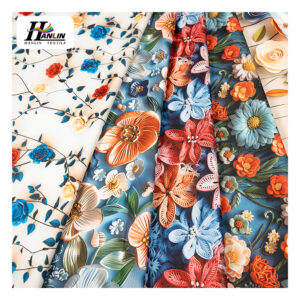What’s the Environmental Impact of Organza vs Corduroy?
Introduction
Fabric choice is crucial in fashion, impacting both style and sustainability. Organza and corduroy, two distinct fabrics, offer unique environmental profiles. This article explores their impact, helping you make informed choices.
Environmental Impact Overview
Organza
Organza is a lightweight, sheer fabric traditionally made from silk but now often produced using synthetic fibers like polyester or nylon. Its environmental impact largely depends on its fiber content:
- Silk Organza: Silk production is labor-intensive and involves mulberry tree cultivation, which can be sustainable. However, silk processing requires significant water and energy.
- Synthetic Organza: Polyester and nylon are derived from petroleum, contributing to greenhouse gas emissions. They are also non-biodegradable, persisting in landfills.
Corduroy
Corduroy is a durable fabric typically made from cotton, although synthetic blends exist:
- Cotton Corduroy: Conventional cotton cultivation is resource-intensive, requiring large amounts of water, pesticides, and fertilizers. However, organic cotton offers a more sustainable option.
- Synthetic Blends: Like organza, synthetic fibers in corduroy add to its environmental footprint due to their non-renewable origins and lack of biodegradability.
Fabric Properties Comparison Table
| Property | Organza | Corduroy |
|---|---|---|
| Fiber Content | Silk, polyester, nylon | Cotton, polyester, blends |
| Weight and Thickness | Lightweight, sheer | Medium to heavy, ribbed |
| Breathability | Low to moderate | Moderate |
| Stretch and Elasticity | Low | Low to moderate |
| Wrinkle Resistance | Low | Moderate |
| Care Instructions | Hand wash, dry clean | Machine wash, tumble dry low |
| Durability | Moderate | High |
Benefits of Organza vs Corduroy
- Visual Interest: Organza adds a delicate, ethereal quality, while corduroy offers a textured, cozy feel.
- Comfort: Corduroy’s softness complements organza’s lightness, providing a balanced tactile experience.
- Versatility: Organza’s elegance suits formal wear, while corduroy is perfect for casual, durable garments.
- Seasonal Use: Organza is ideal for summer, and corduroy provides warmth in colder months.
Potential Challenges
- Care Requirements: Organza often requires delicate handling, while corduroy is more robust.
- Environmental Concerns: Both fabrics have sustainability issues, with synthetic fibers being non-biodegradable.
- Texture and Weight: Mixing these fabrics in one garment can be challenging due to their differing weights and textures.
Conclusion
Both organza and corduroy have distinct environmental impacts, influenced by their fiber content and production processes. Choosing sustainably sourced materials, such as organic cotton corduroy or silk organza, can mitigate these impacts. Understanding these differences empowers you to make environmentally conscious decisions in your fabric choices.


Leave a Reply